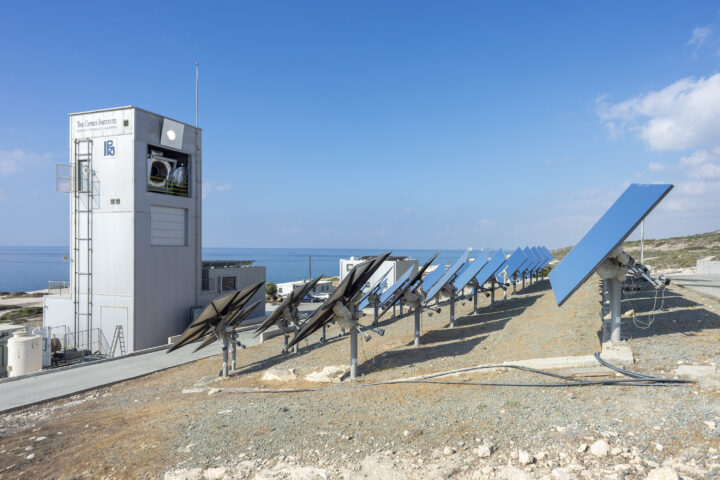Cyprus’ pandemic-struck economy is expected to contract by 6.2% GDP in 2020, rebound 3.7% in 2021 and 3% the year after, said the European Commission autumn economic forecast.
According to the forecast, in the first half of the year, economic activity declined by 5.5% y-o-y, dragged by the impact of the COVID-19 crisis and accompanying lockdown measures.
Unemployment from a height of 8.2% in 2020 will decrease to 7.8% in 2021 and 7.2% in 2022.
Headline inflation is forecast to be “negative in 2020, at -0.9% down from 0.5% in 2019, mainly driven by lower energy prices and non-energy industrial goods.
Inflation is set to rebound gradually in 2021 and 2022 at 0.9% and 1.3%, respectively, on the back of increasing food and services prices.
“Economic activity in Cyprus contracted sharply in the first half of the year, due to the COVID-19 crisis. The important tourism sector has borne the brunt, while domestic demand has shown resilience,” the EC report said.
It said the impact on the labour market has been mitigated by temporary income support measures while Public finances are set to “deteriorate significantly” in 2020.
“Domestic demand fared better than anticipated early this summer, notably private consumption.
Investment, particularly construction fell significantly. Exports of goods and services also declined considerably, the latter reflecting the impact of travel restrictions on tourism.”
The forecast said growth in the fourth quarter is set to slow, as economic sentiment and consumer confidence remain low and the epidemiological situation in Cyprus and its main trading partners is worsening.
Tourist arrivals between January and September were down 85%, while revenues between January and July were nearly 90% lower.
Tourist arrivals from the UK and Russia – Cyprus’s main tourist markets – plummeted, as some travel restrictions remained throughout the summer for travellers from the two countries.
“The recovery of the sector to its pre-crisis level is expected to take longer than the forecast horizon.”
“GDP growth is projected to increase by 3,75% in 2021 and 3% in 2022 when output is expected to slightly exceed its pre-pandemic level. The recovery is expected to be driven by domestic demand,” the outlook said.
Private consumption is set to rebound due to pent-up demand.
“Public consumption is expected to continue growing, due to the stimulus measures extended into 2021 and the planned increases in compensation of employees. Investment is set to partially recover thanks to ongoing tourism-related infrastructure projects.”
Slow property demand
The European Commission projects, “demand for high-end residences is set to slow down, due to the abolition of the investor citizenship scheme”.
It also warned the large pre-crisis private and public sector debt increases the risks of a prolonged economic downturn.
“The planned expiration of loan payment moratoria at the end of the year, with a sizeable take-up by the tourism industry point to challenges ahead.
The potential impact of the Cypriot Resilience and Recovery Plan (RRP) on growth remains an upside risk.”
The general government balance is forecast to record a deficit of 6.1% of GDP in 2020 after a surplus of 1.5% of GDP in 2019.
“Fiscal performance in 2020 is projected to be severely affected by falling revenues and the deficit-increasing fiscal measures adopted to fight the crisis.
“The deficit should “narrow to 2.3% of GDP in 2021 and 2022, assuming that revenue collection picks up on account of the projected recovery and that the majority of the fiscal measures adopted to fight the pandemic, estimated at 4% of GDP, will only have a temporary effect in 2020.”
The public debt-to-GDP ratio is forecast to rise to 112.6% in 2020, before decreasing progressively to 108.2% in 2021 and 102.8% in 2022.
Expenditure is expected to surge in 2020, growing by 11.8%, before stabilising in 2021 and increasing by 2% in 2022.”
Almost the entirety of the COVID-19 related expenditures is expected to be reversed in 2021.
“Rollout of the second phase of the National Health Insurance System (NHIS) and higher compensation for public employees are set to boost public expenditure progressively in 2020, 2021 and 2022.”
“The projected fall in revenue in 2020 (by 6.1%) reflects the large expected decrease in tax revenues (by 7.9%), in particular from indirect and corporate taxes.
Social security contribution revenues are expected to stagnate, despite the two increases in health contribution rates in April 2019 and 2020 to finance the implementation of the GHS.
Revenue is expected to pick up by 8.8% in 2021 and by 2.2% in 2022 on account of the projected economic recovery.










